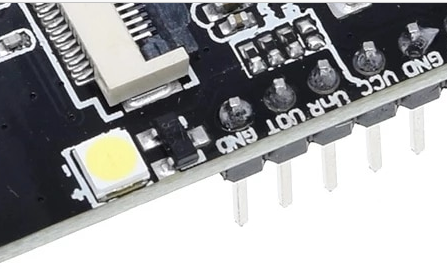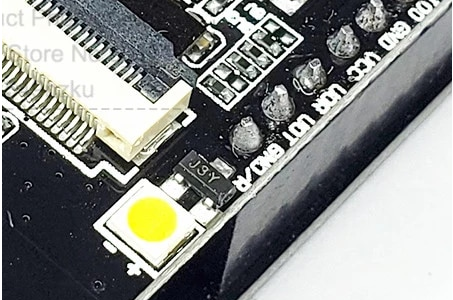
Difference: Esp32-cam (1 vs. 6)
Revision 62023-08-20 - UliRaich
| Line: 1 to 1 | ||||||||
|---|---|---|---|---|---|---|---|---|
The ESP32-CAM moduleIntroduction | ||||||||
| Line: 55 to 55 | ||||||||
|
export RSHELL_RTS="false" export RSHELL_DTR="false" | ||||||||
| Changed: | ||||||||
| < < | When trying to run thonny you will hit the same problem. The new version of thonny (I use version 4.0.0-dev) however allows you to disable DTR and RTS in the file $HOME/config/Thonny/configuration.ini. Just add the 2 lines setting DTR and RTS to False at the end of the file. | |||||||
| > > | When trying to run thonny you will hit the same problem. The new version of thonny (I use version 4.0.0-dev) however allows you to disable DTR and RTS in the file $HOME/.config/Thonny/configuration.ini. Just add the 2 lines setting DTR and RTS to False at the end of the file. | |||||||

The esp32-cam model with the micro USB connector installed | ||||||||
| Line: 86 to 86 | ||||||||
Integration into MicroPythonEspressif provides an esp32-cameraesp-idf-v4.3.1-cam/components. In order to make sure that the correct esp-idf is used for compilation I set: | ||||||||
| Deleted: | ||||||||
| < < | ||||||||
export ESPIDF=/opt/ucc/micros/esp32/esp32-v4.3.1-cam export IDF_PATH=/opt/ucc/micros/esp32/esp32-v4.3.1-cam | ||||||||
Revision 52022-01-11 - UliRaich
| Line: 1 to 1 | ||||||||
|---|---|---|---|---|---|---|---|---|
The ESP32-CAM moduleIntroduction | ||||||||
| Line: 62 to 62 | ||||||||
| This model works similarly to the original version, but with the micro USB connector and a "flash button" already installed. A simple micro USB cable is needed for communication. In order to set the module to flash mode, hold the flash button while pushing the RST button. | ||||||||
| Changed: | ||||||||
| < < |  | |||||||
| > > | 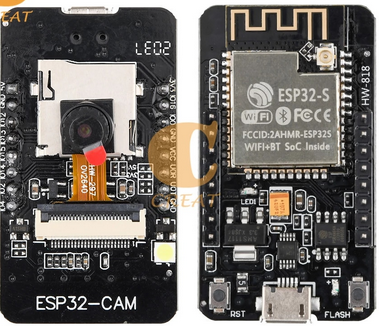 | |||||||
Testing with esp32-whoThe github repository esp32-who | ||||||||
| Line: 76 to 76 | ||||||||
| ||||||||
| Changed: | ||||||||
| < < |  | |||||||
| > > | 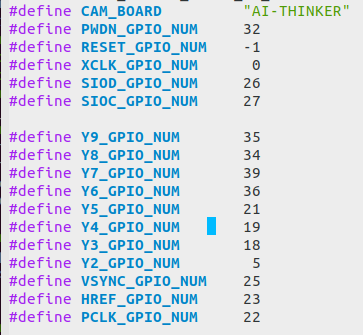 | |||||||
| With these settings, we can build the application and flash it to the board. | ||||||||
| Deleted: | ||||||||
| < < | ||||||||
idf.py build idf.py flashAfter successful flashing connect minicom (or rshell in the case of the esp32-cam-mb) to the camera module and reset the machine. Integration into MicroPython | ||||||||
| Changed: | ||||||||
| < < | Espressif provides an esp32-camera | |||||||
| > > | Espressif provides an esp32-camera esp-idf-v4.3.1-cam/components. In order to make sure that the correct esp-idf is used for compilation I set: | |||||||
| Changed: | ||||||||
| < < | As you can see, it points to the esp-idf to be used, and it makes sure that the correct idf.py, which is stored in esp-idf/tools, is found in the execution path. | |||||||
| > > | export ESPIDF=/opt/ucc/micros/esp32/esp32-v4.3.1-cam export IDF_PATH=/opt/ucc/micros/esp32/esp32-v4.3.1-cam | |||||||
Reserving some space in SPIRAM for the image bufferStandard MicroPython uses all the SPIRAM for its heap. This results in an error when the esp32 camera driver tries to allocate space in SPIRAM for its image buffer. I therefore modified the MicroPython sources to keep some free space for the camera driver. Here is the part I modified in main.c. As you can see, 256 kBytes are reserved. | ||||||||
| Changed: | ||||||||
| < < | 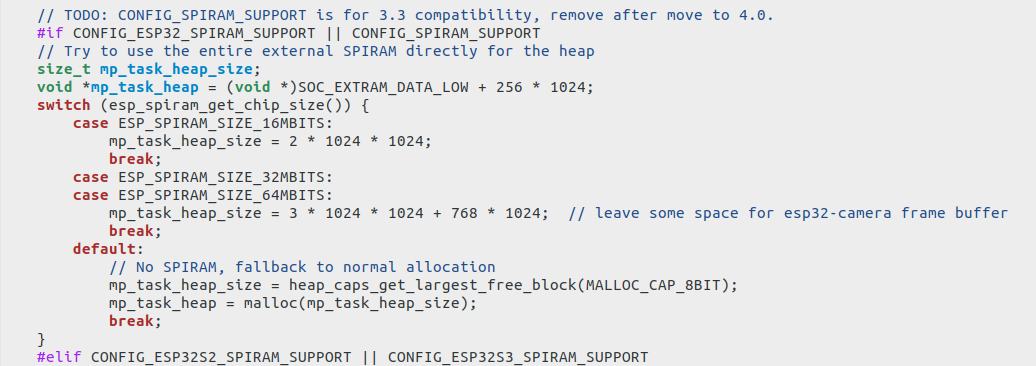 | |||||||
| > > |  | |||||||
|
After this modification, you may follow the description in https://lemariva.com/blog/2020/06/micropython-support-cameras-m5camera-esp32-cam-etc | ||||||||
| Line: 115 to 114 | ||||||||
| ||||||||
| Changed: | ||||||||
| < < |
| |||||||
| > > |
| |||||||
Revision 42021-12-17 - UliRaich
| Line: 1 to 1 | ||||||||
|---|---|---|---|---|---|---|---|---|
The ESP32-CAM moduleIntroduction | ||||||||
| Line: 13 to 13 | ||||||||
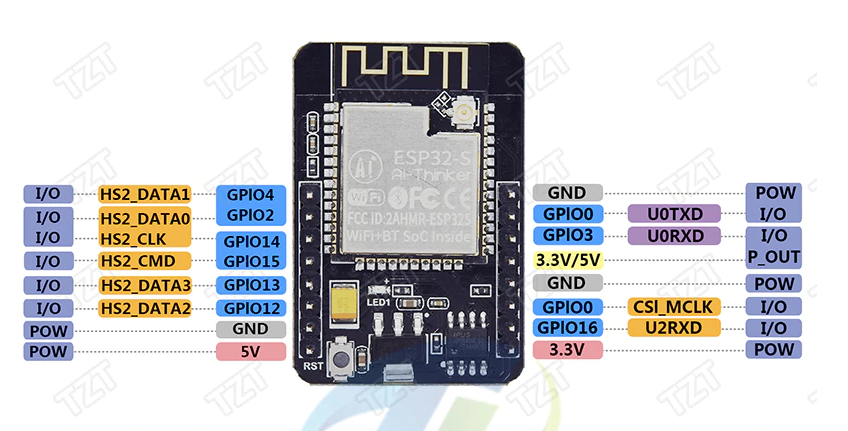 | ||||||||
| Added: | ||||||||
| > > | You find a detailed description of the pinout at https://randomnerdtutorials.com/esp32-cam-ai-thinker-pinout | |||||||
The interface for the SD card:
| ||||||||
Revision 32021-11-15 - UliRaich
| Line: 1 to 1 | ||||||||
|---|---|---|---|---|---|---|---|---|
The ESP32-CAM moduleIntroduction | ||||||||
| Line: 89 to 89 | ||||||||
 As you can see, it points to the esp-idf to be used, and it makes sure that the correct idf.py, which is stored in esp-idf/tools, is found in the execution path.
As you can see, it points to the esp-idf to be used, and it makes sure that the correct idf.py, which is stored in esp-idf/tools, is found in the execution path. | ||||||||
| Added: | ||||||||
| > > | Reserving some space in SPIRAM for the image bufferStandard MicroPython uses all the SPIRAM for its heap. This results in an error when the esp32 camera driver tries to allocate space in SPIRAM for its image buffer. I therefore modified the MicroPython sources to keep some free space for the camera driver. Here is the part I modified in main.c. As you can see, 256 kBytes are reserved. After this modification, you may follow the description in https://lemariva.com/blog/2020/06/micropython-support-cameras-m5camera-esp32-cam-etc
After this modification, you may follow the description in https://lemariva.com/blog/2020/06/micropython-support-cameras-m5camera-esp32-cam-etc | |||||||
|
-- | ||||||||
| Line: 106 to 113 | ||||||||
| ||||||||
| Added: | ||||||||
| > > |
| |||||||
Revision 22021-10-21 - UliRaich
| Line: 1 to 1 | ||||||||
|---|---|---|---|---|---|---|---|---|
The ESP32-CAM moduleIntroduction | ||||||||
| Line: 88 to 88 | ||||||||
 | ||||||||
| Changed: | ||||||||
| < < | As you can see, it points to the esp-idf to be used, and it makes sure that the correct idf.py, which is found in esp-idf/tools, in found in the execution path. | |||||||
| > > | As you can see, it points to the esp-idf to be used, and it makes sure that the correct idf.py, which is stored in esp-idf/tools, is found in the execution path. | |||||||
|
-- | ||||||||
Revision 12021-10-21 - UliRaich
| Line: 1 to 1 | |||||||||||||||||||||||||||||||||||||||||||||||
|---|---|---|---|---|---|---|---|---|---|---|---|---|---|---|---|---|---|---|---|---|---|---|---|---|---|---|---|---|---|---|---|---|---|---|---|---|---|---|---|---|---|---|---|---|---|---|---|
| Added: | |||||||||||||||||||||||||||||||||||||||||||||||
| > > |
The ESP32-CAM moduleIntroductionThe ESP32-CAM module is dedicated to camera readout. It provides
The pinout The interface for the SD card:
The interface for the SD card:
Board VariantsThe ESP32-CAM comes in a number of variants.The original ESP32-CAMThe original version has no USB connector and can only be controlled with a USB to serial adapter.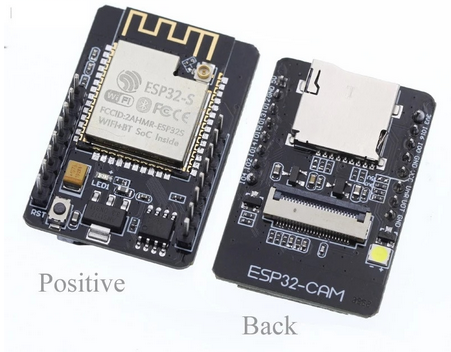 The connections to the USB to serial adapter are as follows:
The connections to the USB to serial adapter are as follows:
The ESP32-CAM-MBThe second variant comes with the ESP32-CAM-MB main board, which provides a micro USB connector.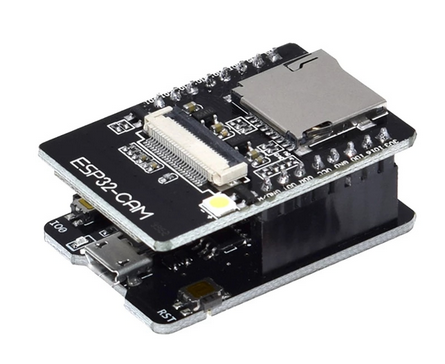 The ESB32-CAM board, to be used with this main board, is slightly modified with respect to the original one:
The ESB32-CAM board, to be used with this main board, is slightly modified with respect to the original one:
export RSHELL_DTR="false" When trying to run thonny you will hit the same problem. The new version of thonny (I use version 4.0.0-dev) however allows you to disable DTR and RTS in the file $HOME/config/Thonny/configuration.ini. Just add the 2 lines setting DTR and RTS to False at the end of the file. 
The esp32-cam model with the micro USB connector installedThis model works similarly to the original version, but with the micro USB connector and a "flash button" already installed. A simple micro USB cable is needed for communication. In order to set the module to flash mode, hold the flash button while pushing the RST button.
Testing with esp32-whoThe github repository esp32-whoidf.py menuconfigIn the Kconfig menu coming up you must
 With these settings, we can build the application and flash it to the board.
With these settings, we can build the application and flash it to the board.
idf.py build idf.py flashAfter successful flashing connect minicom (or rshell in the case of the esp32-cam-mb) to the camera module and reset the machine. Integration into MicroPythonEspressif provides an esp32-camera As you can see, it points to the esp-idf to be used, and it makes sure that the correct idf.py, which is found in esp-idf/tools, in found in the execution path.
--
As you can see, it points to the esp-idf to be used, and it makes sure that the correct idf.py, which is found in esp-idf/tools, in found in the execution path.
-- Comments
| ||||||||||||||||||||||||||||||||||||||||||||||
View topic | History: r6 < r5 < r4 < r3 | More topic actions...
Ideas, requests, problems regarding TWiki? Send feedback
